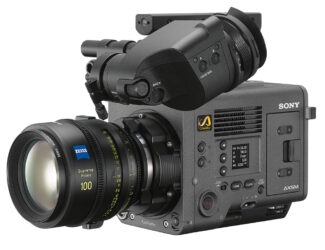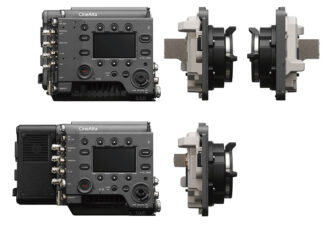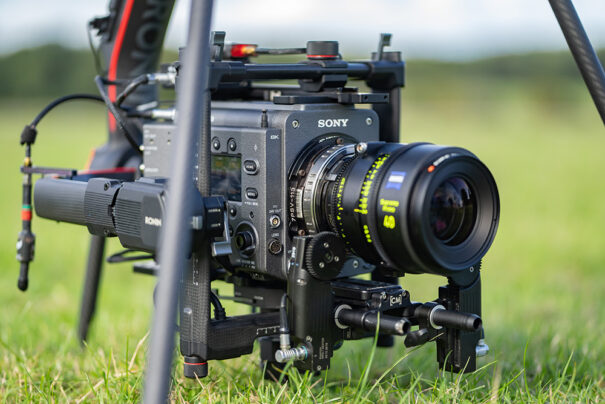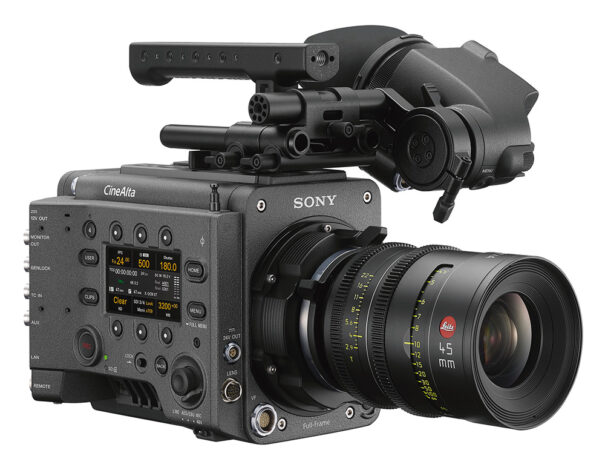Sony introduces new Venice 2 film camera with interchangeable 8.6K sensor
The flagship Venice from Sony evolves in Venice 2, a solution equipped with a more compact body, internal X-OCN recording and the possibility of using both the new 8.6K sensor and the original 6K sensor of the Venice.
The Venice 2 model, which will coexist with the original Venice, stands out for having a Full Frame 8.6K (8640×5760) CMOS sensor, offering a total latitude of 16 steps and the same color technology as the original Venice. Other highlights include a unique dual-base ISO 800/3200 mode, which allows filmmakers to capture images in a wide range of lighting conditions.
The CineAlta Venice 2 supports everything from full frame (including full frame anamorphic) to super 35mm, with a minimum resolution of 4K. This versatility is intended to convince all cinematographers to see the Sony new camera as a “versatile ” for “any type of production”.
The Venice 2 camera with 8.6K sensor is scheduled to begin shipping in February 2022. The camera can be used with the extension system with the existing 6k sensor. A next-generation extension system for the 8.6K sensor is scheduled to be commercially available in early 2023.
Improvements over Venice
Thanks to feedback from the production community, the Venice 2 from Sony has been designed with a smaller and lighter body than the original Venice, while retaining its intuitive operation. Despite being 44mm smaller and approximately 10% lighter, the Venice 2 boasts new features such as internal X-OCN recording and Apple 4K Pro Res 4444 and 422HQ without the AXS-R7 recorder.
The user-selectable capture resolution of the 8.6K image sensor allows recording in different modes, including 8.6K in 3:2 at 30 FPS and full frame; 8.2K in 17:9 at 60 FPS and full frame; 5.8K in 6:5 anamorphic at 48 FPS and super 35; or 5.8K in 17:9 at 90 FPS and Super 35.
For added flexibility, the Venice 2 chassis continues to incorporate the unique functionality that allows the image sensor block to be interchanged. The camera can be used with either the 8.6K sensor or the original 6K sensor block. The camera body automatically recognizes the change and operates without the need to swap or reinstall firmwares, providing greater flexibility during shooting. The original 6K sensor offers a higher frame rate.
 AXS and optimized functionalities
AXS and optimized functionalities
The Sony Venice 2 uses the new high-speed 6.6 Gbps AXS AXS-A1TS66 AXS card for 8K 60p recording. Existing AXS card readers, including the AXS-AR3 via the Thunderbolt 3 interface, support the new formats.
The user interface of the Venice 2 is the same as the original, but with improvements to make it easier and more intuitive to use. The camera has a revamped design and is compatible with almost all of the original Venice accessories. Other improvements widely demanded by the community that have been implemented include 4K output with LUT applied; improved 3D LUT processing to improve image quality; IO changes applied to the S-Log3 outputs; LUT/ASC-CDL control via Ethernet/Wi-Fi; Zoom to Fit function (full frame recording with 17:9/16:9 monitoring); Ethernet connector position changed to the camera assistant’s side; 2-pin Lemo output connector for 12 V; or a built-in internal microphone.
 A system put to the test
A system put to the test
Robert McLachtan (ASC, CSC), who has worked on Game of Thrones, Westworld and Lovecraft Territory, describes the experience: “I really wish we’d had a large format, 8.6K sensor like Sony Venice 2 on Game Of Thrones. It would have made it feel even more epic and, at the same time, more engaging, thanks to the increased resolution, richness, and dimensionality. The increased speed, cleaner highlights, and shadows together with the potential for super-shallow depth of field would have been a huge asset.”
On the other hand, Claudio Miranda (ASC, ACC), after testing the Venice 2 in a California desert, says: “In the film, there is still fidelity in the shadows, and the wide shots are pretty spectacular. There were no film lights on this shoot at all. There were just headlights of the car, the fire, and that was the point. It was to go to the middle of nowhere and put a big fire and see how far the new sensor could light up the mountain, without noise.”
Finally, Rob Hardy (BSC), author of films such as Mission Impossible: Fallout, comments, “I’m used to using the original Venice and I would say, I am a pretty much an advocate of that camera. The opportunity to use this Venice 2 is actually a really fantastic one. This is the first time I’ve ever used that larger sensor, the 8.6K and we were lucky enough to get some anamorphic lenses that were set for the full cinematic effect and that really utilised that whole sensor. The ISOs have been bumped up so that enables me to shoot at a higher speed in the low light levels which is something what wasn’t really an option before, and that’s the big gain for me.”
Cet article vous a plu ?
Abonnez-vous à notre Nourrir Et vous ne manquerez rien.

















